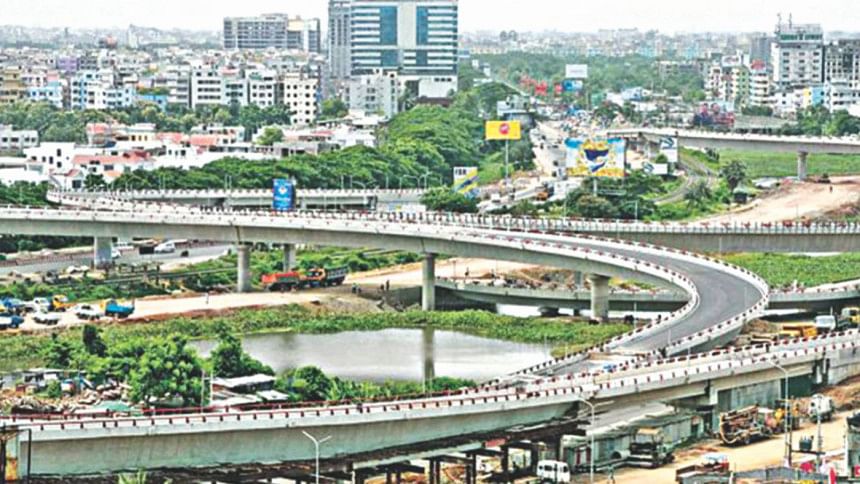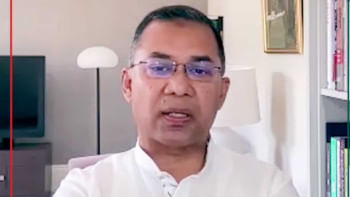The megaproject paradox

I have been a voracious consumer of news trivia since my Dhaka University days when I was quite a BBC World News addict. Recently, on the morning of January 10, as I was listening to BBC Newshour, an odd news header caught my attention. It was reported that China and Australia had a minor tiff over a comment made by the Australian Minister for International Development, Concetta Fierravanti-Wells. In a newspaper interview, she criticised China for constructing "useless buildings" and "roads to nowhere" in many Pacific Islands nations. It may be recalled that China has been engaged in the construction of "megaprojects" in Third World countries, often financing them with soft loans. Beijing, stung by this criticism, hit back by accusing Australia of "behaving like an arrogant overlord."
Closer to home, what made this brouhaha interesting for me are the recent series of op-eds in The Daily Star and Prothom Alo subjecting our own megaprojects, some of which are supported by Chinese and Indian loans, to careful scrutiny. At a roundtable on infrastructure development in Bangladesh organised by The Daily Star and BSRM in December 2017, many participants spoke up against poor planning, cost overruns, delays, and lack of proper management. One of the participants, Dr Ahsan H Mansur, Executive Director of PRI, reportedly said that "Bangladesh was setting up the Rooppur Nuclear Power Plant for USD 13 billion to generate USD 2,400 megawatts of electricity but the same amount of power could be generated for USD 2.5 billion or less."
To take another project, the proposed rail connection over the Padma Bridge, many at the roundtable had questioned the wisdom of plunking down almost USD 5 billion on a megaproject which is of questionable economic value. "The railway on the Padma Bridge is a Tk 40,000-crore project, which is costlier than the bridge itself. How many trains need to run on the lines a day to make that investment worthwhile? Is there any analysis of that? No," said Dr Mansur.
Now, megaprojects are ubiquitous. These often take the form of big, expensive infrastructure projects such as bridges, roads, buildings, rail lines, you name it. Whether one likes them or not, they will stay with us. Why? For many reasons.
First, they provide legitimacy to the regime in power. Second, big projects are symbols of the modern era. And finally, the construction of these projects provides a vision of the future. However, megaprojects are also often plagued by cost overruns and delays.
So, the question is, what accounts for this fascination with megaprojects and the mega-problems that have bedevilled these "white elephants"? While each megaproject is a case by itself, they all share some common elements, according to Professor Bent Flyvbjerg, Professor of Major Programme Management at Oxford University Said Business School. He says that megaprojects are systematically subject to "survival of the unfittest" and that might explain why the worst projects are completed rather than the best. Professor Flyvbjerg's research on megaprojects identifies "megaprojects paradox" and examines its causes, and offers possible cures for cost overruns, benefit shortfalls, optimism bias, strategic misrepresentation, and other issues.
In a publication titled "Megaprojects and Risk: An Anatomy of Ambition," he and others are critical of the mindset that leads political leaders and lobbyists to push for the adoption of "megaprojects." They start the booklet with the following statement: "Wherever we go in the world, we are confronted with a new political and physical animal: the multibillion-dollar mega infrastructure project," and the offer "the iron law of megaprojects": over-budget, overtime, and over and over again. They blame project managers for the mindset leading to the "break-fix model of megaproject management." This faulty model is built around the philosophy that at some point the project will "break" and will have to be "fixed," but it also has led to delays and cost overruns.
Finally, academicians, policymakers, and politicians have over the years hinted why cost overruns are so common, and often need to be covered up. Professor Albert Hirschman of Yale University in 1967 advised that initial cost estimates of megaprojects have to be concealed, because if people knew in advance the real costs and challenges involved in delivering a large project, "they probably would never have touched it" and nothing would ever get built!
A well-known American politician who appears to have taken Hirschman's advice seriously is Willie Brown, former California State Assembly speaker and mayor of San Francisco. In a fascinating speech in 2013, he admitted that the true cost of megaprojects was always hidden from the public. "We always knew the initial estimate was way under the real cost. Just like we never had a real cost for the [San Francisco] Central Subway or the [San Francisco-Oakland] Bay Bridge or any other massive construction project. So get off it. In the world of civic projects, the first budget is really just a down payment. If people knew the real cost from the start, nothing would ever be approved. The idea is to get going. Start digging a hole and make it so big, there's no alternative to coming up with the money to fill it in." Willie Brown might sound cynical, dishonest or candid, but he makes a good point.
However, I will concede that cost overruns of 30 percent or more are not extraordinary and can be expected in large and complex projects, and this happens even in the best of circumstances. Once a megaproject is initiated, many factors such as international prices, weather, and political climate in the country are unpredictable. Many large projects take such a long time to build—more than eight-and-a-half years for the average large dam—that they are vulnerable to a kind of entropy, in which even unrelated events can produce huge setbacks. Fortunately, project managers in our country can draw some important lessons from the projects analysed by the Oxford University group, and find some hopeful signs from two successful projects that China is expected to complete on time and within budget. These are the USD 2 billion mass transit light railway in Lahore, and a coal-powered power plant in Karachi, also costing USD 2 billion.
Dr Abdullah Shibli is an economist, and Senior Research Fellow, International Sustainable Development Institute (ISDI), a think-tank in Boston, USA.





Comments